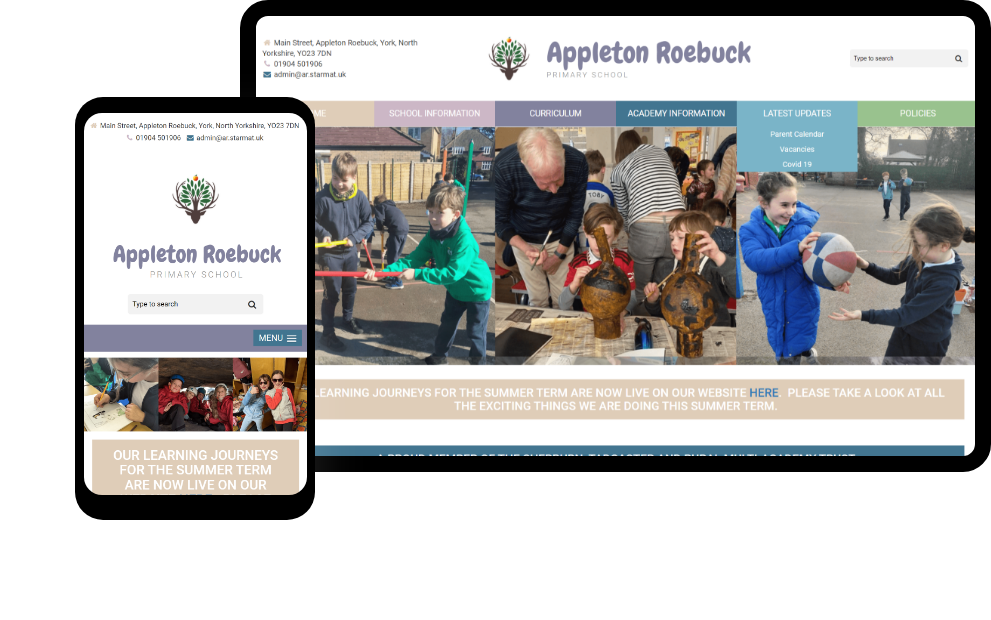Go Where Your Target Audience Can Be Found
It used to be easy to find your target audience. You could put an ad in the newspaper or a giant billboard up for all to see. Or all you need to do is advertise in the right magazines.
Today reaching your target audience is a bit more difficult. They are spread all over the internet on a variety of social media platforms or they may not be there at all. But if you are looking to increase your school’s enrollment then you need to incorporate social media marketing in your school web design.
What is The Role of Social Media in Enhancing School Web Design?
One of the most important roles social media has when incorporated into your school web design is that it fosters engagement. Your students and their parents can feel part of the school through this strategy.
Another important role is that adding social media to your mobile-friendly school website design is that information is easier to share. Students can pass along vital school information to their friends a lot faster and easier.
It makes for a better user experience and allows everyone connected to the school to know what is going on. Plus, the school can showcase its products, schedules, and activities, as well as make communication better between teachers and parents.
Incorporating social media in your school website design is helping the school go where its target audience spends most of its time. That makes communication run smoother and people get the information they need before it is too late.
Social Media’s Impact on School Web Design
The biggest impact social media has on a school’s website design is that it filters out extraneous information and helps you define your school and its brand a lot more coherently.
The social media platforms help you develop a voice for both the website and your social media accounts. The two are not necessarily the same. Plus, social media usually has its own set of goals created by the school.
These goals may differ slightly or vastly from the goals you have for your regular website. This extra set of goals helps you define your school in much easier-to-understand terms.
In addition to that, the social media impact means that your regular website should be mobile-ready. Most people access websites through their mobile phones and being social media-ready means you have taken care of two birds with one stone.
Social Media Boosts Enrollment via School Web Platforms
This is a positive result that should be expected. When you design your website to go where your target audience spends its time, then chances are you will increase enrollment.
Social media participation says a lot about your school to your target audience and gets them interested in what your school is all about. With over 57 million social media users in the UK alone, you have a large audience to reach.
Going where your audience is the premium strategy for any school that wants to increase enrollment and be seen as a successful academic institution. What helps accomplish this goal is that your social media marketing can be more targeted.
It also provides key information for those people searching for information on a specific school. This type of marketing has been described as similar to a shop window open to the street.
People get a glimpse of what your school is all about and when interested they can enter and explore
Social Media Integration in Modern School Web Design
This is not something that can be done overnight. First, you have to make sure your website design is aligned with your social media marketing strategy. The next step is to make sure your website design is fast and responsive.
Mobile phone and social media users are very quick on the draw and can bounce off your slow-moving website very quickly. The third step for proper social media integration is to have your website design including social media icons and share buttons.
The fourth step is as important as the first three but maybe slightly more important at the same time. When integrating social media into your modern school website design you still need riveting content to hold their attention.
This content needs to be entertaining as well as shareable or it may not capture the interest of your website’s visitors. Don’t forget to track the performance of your website design.
Staying Current with Social Media in School Web Strategies
This means that you have to stay current with popular trends, be able to see what new trends are developing and know when to switch from older trends to newer ones.
The trends that are being suggested currently are:
– use posts and X to broadcast updates and alerts
– use live streaming for lectures and discussions
– use Instagram for digital storytelling
– and more options
Staying current means watching what social media trend becomes popular and which ones have lost favour with your target audience. Then adapt to the changing landscape.
Also, you should have social media icons on your web pages so your target audience can easily access those accounts and see what you are doing on those platforms.
The reason you use social media outlets like YouTube is that if you are not telling your story, someone else is and the information may not be accurate or flattering to your school.
Some Additional Words
When you are ready to incorporate your school website design with social media accounts, contact our company. This is what we do. Our company is dedicated to upgrading and enhancing school website designs.
We do the hard work for you and can help you create a great social media marketing plan that should reach your target audience. This is not that hard to accomplish when you have our experts working with you to create a great social media marketing strategy.









